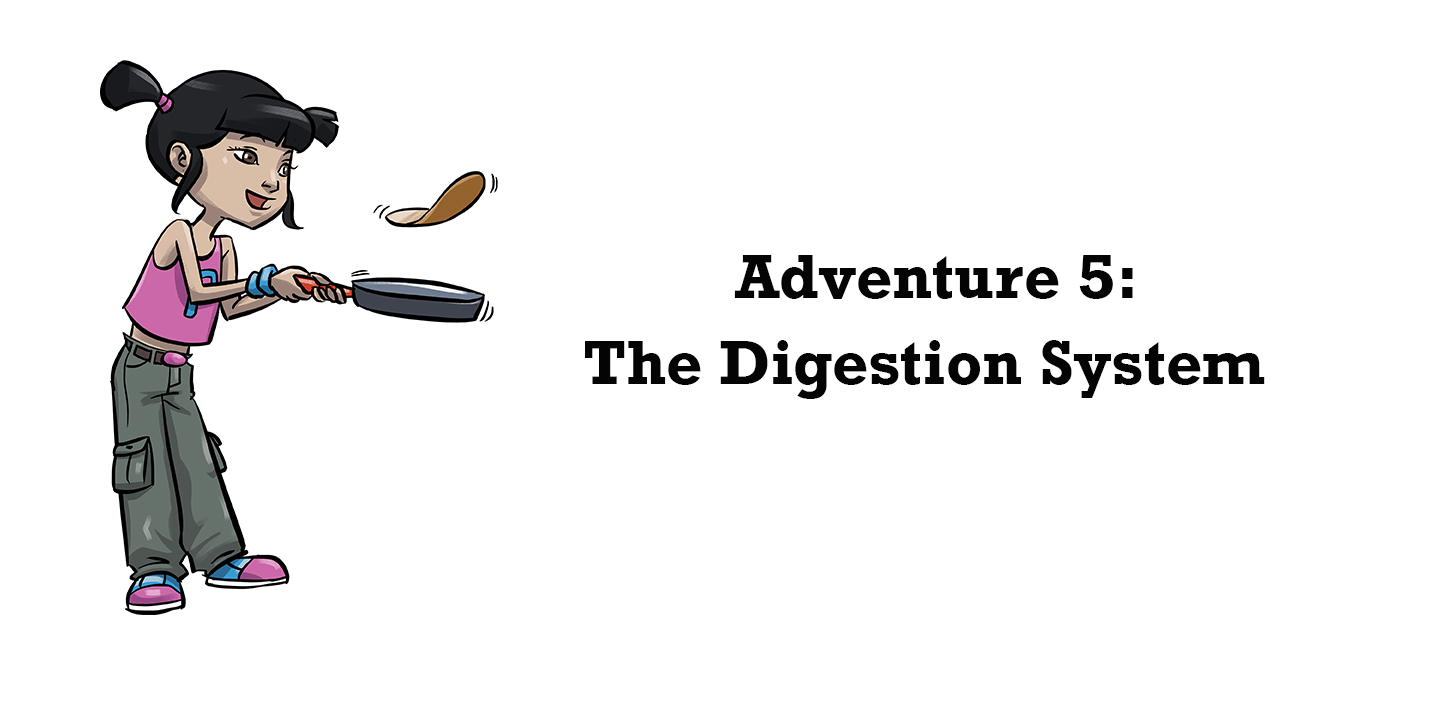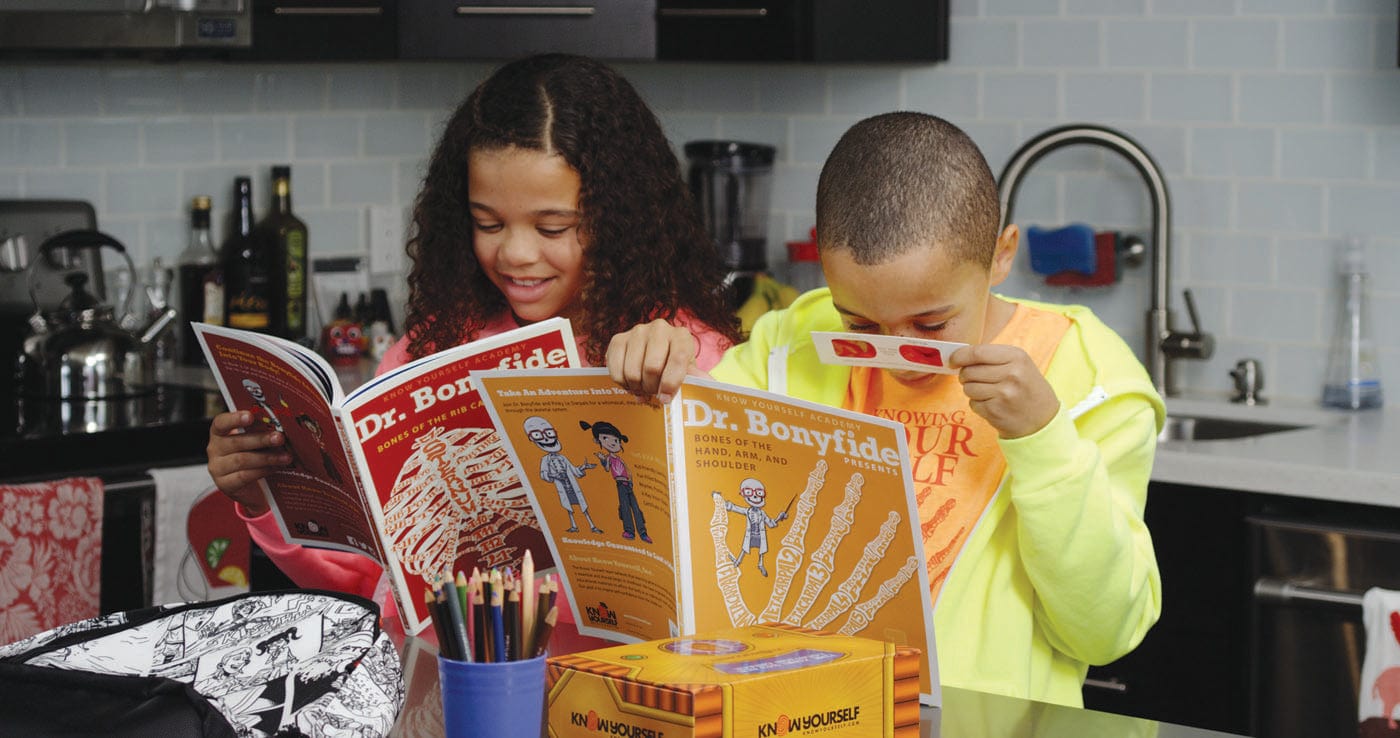
We eat every day, but how often do we stop to think about how that process happens? Have you ever thought about how the digestive system functions.
Your digestive system works with many parts to break down what you eat. Through the digestive process, your body absorbs needed nutrients from your food and gets rid of excess waste and any indigestible parts of whatever you have eaten. They say you are what you eat, and your digestive system organs and functions will follow suit.
To gain a bigger picture of how it all works, it might help to follow your food!
How Does the Digestive System Work for Kids and Adults? Follow Your Food
Digestion can start before you even begin eating! Just looking at, smelling, or thinking of delicious food results in your brain sending signals that food is on the way. This signal triggers your salivary glands to produce saliva, which is an important helper in breaking down the food in your mouth (also called mechanical digestion) and sending it down the digestive tract.
Once your food has been chewed down to a smaller travel size, it takes a voyage through your digestive system before exiting the body. After you swallow, your esophagus leads food into your stomach.
At this point, food is further broken down by acids and digestive enzymes (known as chemical digestion). Inside the small intestines and large intestines food becomes more deconstructed while nutrients reabsorb into the body. Whatever is left of the food and makes it to excretion is waste that can't be used by the body.
Is Bacteria Bad or Good?
Within your gut lives a diverse colony of bacteria. Certain bad bacteria give all bacteria a bad reputation, but there are a lot of good bacteria that live inside your gut - thousands actually! These good bacteria do the work needed to support your body's digestive system and prevent you from getting sick.
Despite there being many good bacteria, bad bacteria can also live within the gut. If there are too many bad bacteria and not enough good bacteria, a person might suffer from digestive system disorders, like diarrhea, or illnesses affecting other systems, like yeast infections. When good bacteria levels get damaged by bad bacteria, it can take weeks or months to regenerate healthy levels of good bacteria.
Luckily, there are some measures you can take to help good bacteria win the fight. One simple thing you can do is make sure you get a healthy intake of prebiotic and probiotic foods.
Prebiotics are food fibers that only your good bacteria can break down, think of prebiotics as food just for your gut flora! Good bacteria like to munch on fibrous foods which contain prebiotics - like fruits, vegetables, and whole grains.
Probiotics are good organisms that live inside your body and support your immune function and help out with digestion. Probiotics come from certain foods - like yogurt and cheese - or in a supplement form and encourage the growth of good bacteria. A win for good bacteria is a win for you!
Fun Fact:
There are around 100 trillion bacteria inside your digestive system! All together, these are the microbiota ecosystem!
Parent Tip:
When giving antibiotics, keep in mind they can eliminate many good bacteria while trying to get rid of bad bacteria. If you do a round of antibiotics, probiotic supplements can help restore your child's good gut bacteria levels. Talk to your doctor about this.
How Does the Digestive System Work with Other Systems?
They say teamwork makes the dream work, and this is true about your body’s systems as well! The digestive system can’t function properly without support from the nervous, circulatory, cardiovascular and muscular systems.
The digestive system works with the circulatory system to absorb nutrients and spread them throghout the body. It works with the nervous system to send signals to the brain and other organs. The cardiovascular system provides oxygen and nutrients needed to produce energy, and the muscular system helps you pass food through your body. See, it’s all connected!
Cultural Beliefs About Nutrition
Everybody eats, but not every person ingests the same foods to get their nutrition. This is because cultures and the foods those cultures normally eat differ around the globe! What one culture might eat for breakfast every morning might not be what you think of when you are considering what to eat for breakfast.
Kids in Hong Kong might eat Congee ("rice porridge"), while kids in Russia might have Kasha ("buckwheat porridge"), and kids in America might have a bowl of oatmeal. Even though these foods have unique names, looks, and tastes, all of these foods contain soluble and insoluble fiber and as a result offer the same nutrition.
Activity:Ask your kids to research some traditional foods from other cultures. Once they do, try out a recipe for that dish together.
To learn more about your digestive system, join the Loops Crew in Adventure 5: The Digestive System as they travel through Ancient Japan in the Adventure Series: 12 Systems of the Body!









Leave a comment (all fields required)